An epic journey through the Middle East's biblical history, revealing ancient secrets and timeless wisdom that resonate across cultures.
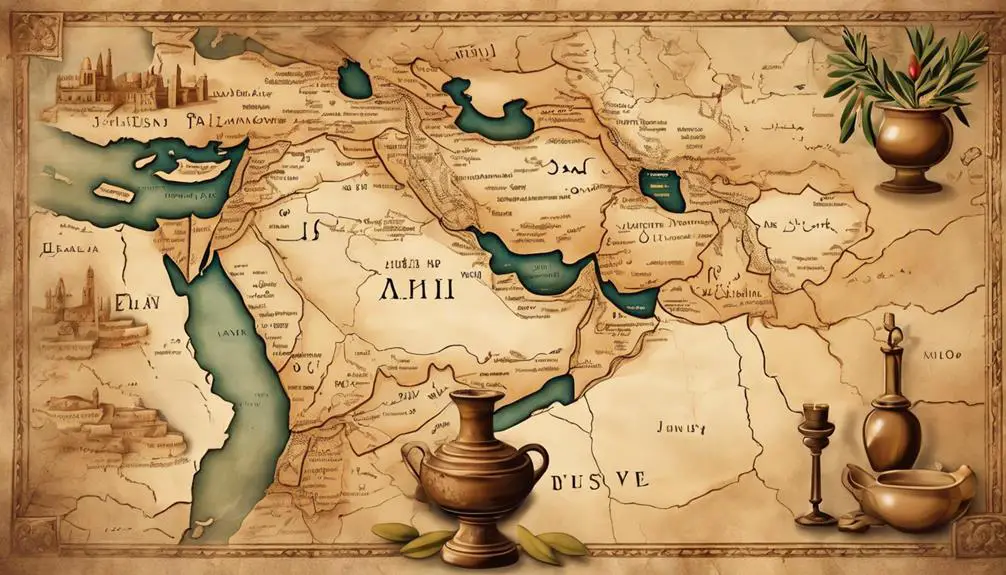
Middle East in the Bible
The Middle East isn't just a crossroads of civilizations; it's the epicenter where biblical history unfolds on a scale that rivals the greatest blockbusters. As you trace the footsteps of Abraham from his birthplace, navigate through the trials and tribulations of the Exodus, explore the monumental kingdoms of Israel and Judah, listen to the prophets in the desert, and stand in awe of Jerusalem's sanctity, you'll discover the profound influence of Babylon on this sacred narrative.
Each chapter not only shaped the spiritual landscape of its time but also sowed the seeds for modern-day discussions. Uncover why these ancient stories continue to resonate so powerfully across cultures and epochs, and you might just find more than historical facts – perhaps a deeper understanding of the world we live in today.
Key Takeaways
- Abraham's journey from Ur highlights the transformative nature of biblical migrations and faith.
- The Exodus and subsequent events underscore the importance of liberation, faith, and divine guidance in biblical narratives.
- Jerusalem serves as a pivotal center for religious convergence, conflict, and coexistence among Judaism, Christianity, and Islam.
- Babylon's cultural and religious impacts, especially during the Babylonian Captivity, significantly shaped Jewish religious identity and practices.
The Birthplace of Abraham
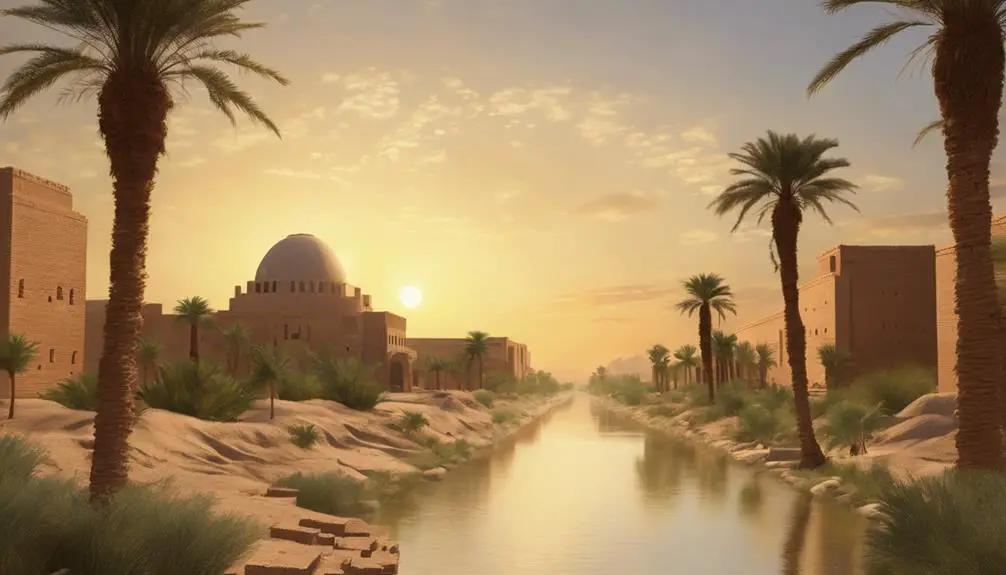
Abraham, a pivotal figure in biblical history, was born in the ancient city of Ur, located in what's now modern-day Iraq. This detail isn't just a minor footnote in religious texts; it's a significant link to understanding the broader Mesopotamian culture that shaped much of early human civilization. You see, Ur wasn't just any city. It was a major urban center during the Early Bronze Age, thriving with economic, religious, and political activities that were sophisticated for their time.
Ur's archaeology offers tantalizing clues into the world that Abraham would have known. Excavations reveal grandiose structures like the Ziggurat of Ur, which underscore the city's importance and the technological prowess of its inhabitants. These archaeological findings also help scholars piece together the social and religious practices prevalent in Mesopotamian society, providing a backdrop against which Abraham's early life can be contextualized.
Therefore, understanding Ur and its culture is crucial. It allows you to grasp the significance of Abraham's departure from such a cosmopolitan center, underpinning the monumental faith and courage this journey entailed. This departure wasn't merely a physical relocation; it was a profound transformation that would shape the course of biblical history.
Exodus and the Promised Land

After exploring the significant beginnings of Abraham in the city of Ur, we now turn our focus to a pivotal event in biblical history: the Exodus and the establishment of the Promised Land. This momentous period is marked by the Hebrews' departure from Egypt, an event rich with theological and cultural implications. The plague narratives serve as a critical component of this story, illustrating the power struggle between the God of Israel and the gods of Egypt. These plagues, culminating in the death of the firstborn of Egypt, underscore the themes of divine judgment and deliverance that resonate throughout the biblical text.
The crossing of the Red Sea is another key element, symbolizing the liberation of the Hebrew people from bondage. This miraculous event not only signifies a physical passage from slavery to freedom but also represents a spiritual journey towards faith and reliance on divine providence. The establishment of the Promised Land further signifies a fulfillment of the covenant made with Abraham, marking a transition from nomadic existence to nationhood. This period sets the foundation for the emergence of Israelite identity and the complex relationship between divine promise and human action in biblical narrative.
Kingdoms of Israel and Judah
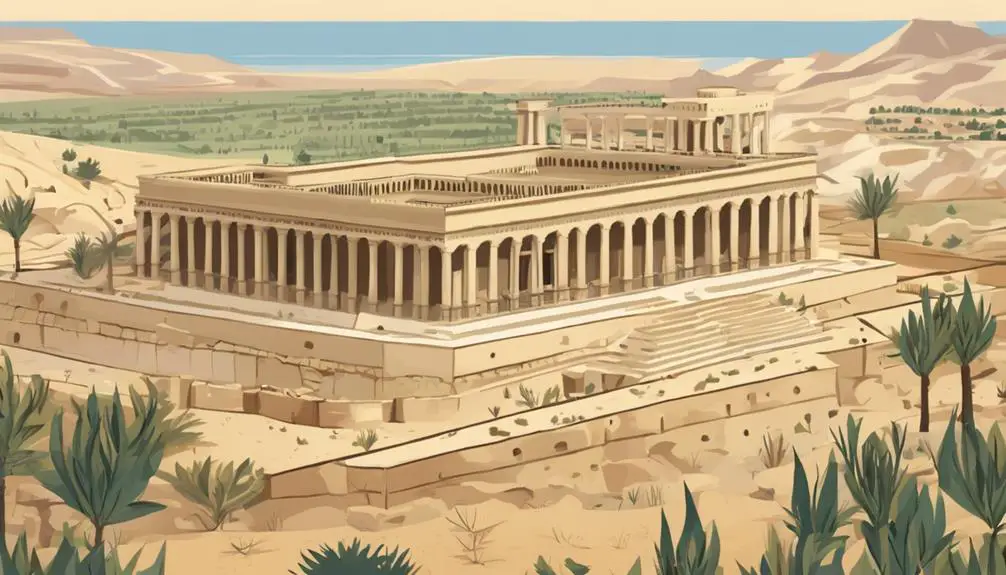
The establishment of the Kingdoms of Israel and Judah marks a critical juncture in biblical history, reflecting the transition from unified monarchy to divided nationhood. This division followed the death of King Solomon, known for his contributions to Solomonic architecture, illustrating a significant era of building and development. The split led to the formation of two distinct entities: the northern kingdom of Israel and the southern kingdom of Judah.
- Tribal Confederation: Initially, the twelve tribes of Israel formed a loose confederation. It was under kings Saul, David, and Solomon that the tribes experienced a period of unified monarchy.
- Solomonic Architecture: King Solomon's reign is noted for architectural and infrastructural advancements, including the First Temple in Jerusalem, a symbol of religious and national identity.
- Division Causes: Post-Solomon, the kingdom divided due to political, economic, and social tensions, exacerbated by heavy taxation and forced labor.
- Cultural and Religious Identity: Despite division, both kingdoms maintained a shared identity through religion, festivals, and traditions rooted in their ancestors' covenant with God.
- Prophetic Voices: While not the focus here, the era saw the rise of prophetic voices that would challenge, guide, and shape the future of both kingdoms.
This period underlines a transformation from a tribal confederation to structured monarchies, setting the stage for the complex socio-political and religious landscape that would define the region.
Prophets in the Desert
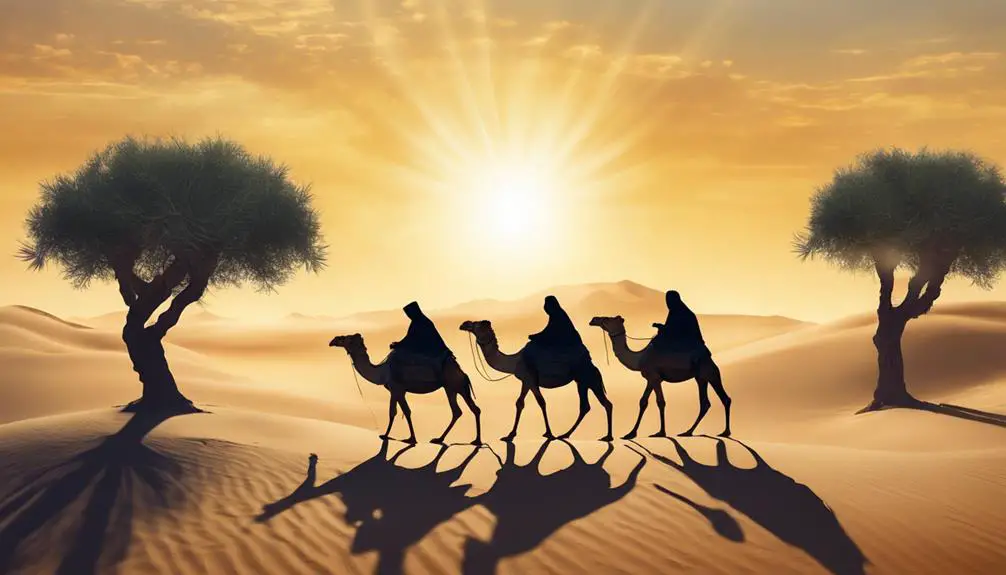
Although the division of the kingdoms of Israel and Judah created political and social upheaval, it also provided fertile ground for the emergence of prophetic figures who'd leave an indelible mark on the religious landscape of the desert. These prophets, emerging from the harsh, unforgiving environment of the desert, brought with them messages that were as profound and enduring as the landscape from which they hailed. Their teachings, often referred to as desert revelations, were steeped in the realities of nomadic spirituality, reflecting a deep connection to the divine through the natural world.
The desert's vastness and solitude offered a unique setting for introspection and revelation, shaping the prophetic messages in ways that urban or settled contexts could not. This environment fostered a spirituality that was raw and unencumbered by the trappings of civilization, allowing prophets to tap into a direct line of communication with the divine. These desert revelations thus carried a purity and urgency that resonated deeply with the people of the time, guiding them through periods of doubt and despair.
Moreover, the nomadic spirituality inherent in these revelations emphasized a reliance on faith and trust in divine providence, principles that would profoundly influence the development of religious thought in the region. Through their lives and teachings, the prophets of the desert carved paths of spiritual and moral guidance that have endured through the ages, leaving a legacy that continues to inspire.
Jerusalem: A Holy City
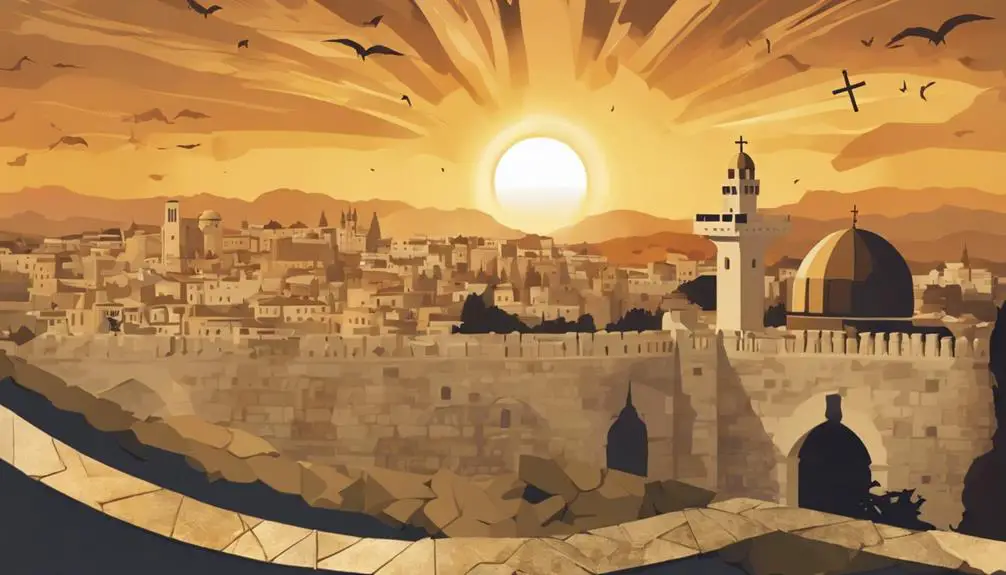
Throughout centuries, Jerusalem has stood as a pivotal hub of religious fervor, drawing believers from various faiths to its sacred grounds. This city, steeped in history, has been a focal point for some of the most significant religious and historical events in the world.
- Crusader Control: For a period, Jerusalem fell under the control of the Crusaders, marking a time of significant religious and military upheaval. This era underscored the city's importance to Christianity and its pivotal role in religious conflicts.
- Modern Conflicts: Jerusalem remains at the heart of modern conflicts, symbolizing the ongoing struggle between different faiths and political ideologies. The city's significance is undiminished, reflecting its complex history and the enduring faith of its people.
- Sacred Sites: The city houses sacred sites central to Judaism, Christianity, and Islam, including the Western Wall, the Church of the Holy Sepulchre, and the Dome of the Rock.
- Cultural Mosaic: Jerusalem is a mosaic of cultures, each contributing to the city's unique identity and rich heritage.
- Center of Pilgrimage: It continues to be a destination for pilgrims worldwide, seeking spiritual connection and historical insight.
Jerusalem's story is one of faith, conflict, and coexistence, emblematic of the broader human experience.
The Influence of Babylon
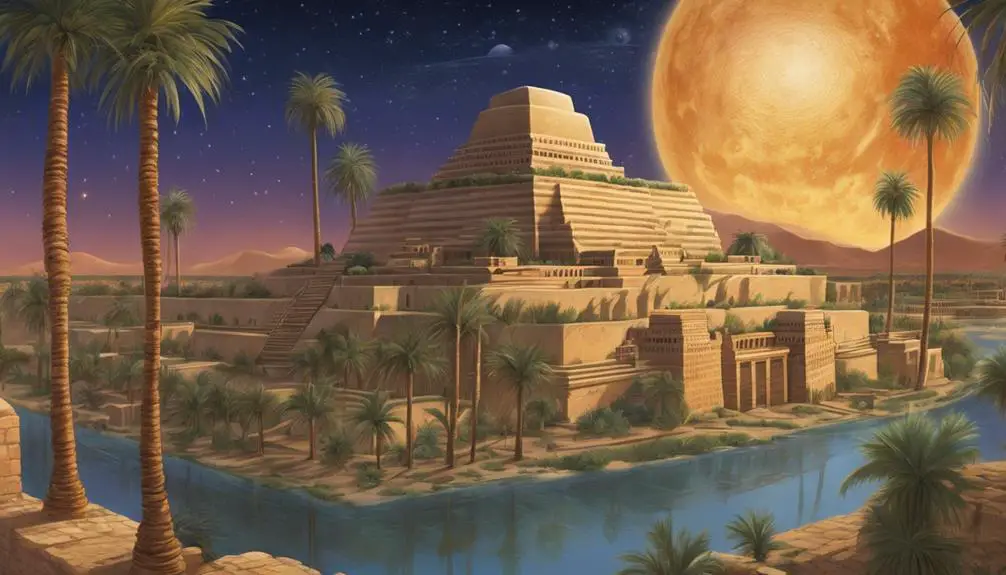
In analyzing the Middle East's religious and cultural history, one can't overlook Babylon's profound impact on the region's development. During Nebuchadnezzar's reign, the Babylonian Captivity stands out as a pivotal moment. This period, lasting approximately 70 years, saw a significant number of Jews exiled from their homeland to Babylon. It wasn't merely a displacement of people; it reshaped their cultural and religious identity.
Nebuchadnezzar's reign marked an era of substantial construction and cultural achievements in Babylon, which became one of the ancient world's most splendid cities. However, it's the Babylonian Captivity that profoundly influenced the Jewish community, compelling them to adapt, preserve, and transform their traditions and beliefs in foreign lands.
This captivity period led to the development of the synagogue, a fundamental institution in Jewish religious life, as a place of worship outside Jerusalem's Temple, emphasizing the study of the Torah. It also catalyzed significant theological reflections and writings, including parts of the Hebrew Bible, which pondered the reasons for their exile and their relationship with God.
Thus, Babylon's influence extends far beyond its architectural and political achievements under Nebuchadnezzar's reign, deeply intertwining with the spiritual and cultural fabric of the Jewish people, and by extension, impacting the broader narrative of the Middle East's religious history.
Frequently Asked Questions
How Do Contemporary Middle Eastern Geopolitical Borders Correlate With Biblical Narratives?
You're exploring how today's Middle Eastern borders align with stories from ancient texts. Modern interpretations often highlight discrepancies, suggesting that biblical inaccuracies exist when directly comparing these narratives to current geopolitical lines.
It's crucial to analyze these differences objectively, understanding that historical and cultural shifts significantly impact territorial definitions over millennia. This scholarly approach helps you grasp the complex relationship between ancient writings and the contemporary geopolitical landscape of the Middle East.
What Role Do Women Play in the Societal and Religious Contexts of the Middle East as Described in the Bible?
In the tapestry of societal norms, women emerge as pivotal threads. Female prophets and marriage customs offer a lens into their roles, reflecting a complex interplay between reverence and subordination.
Analyzing these elements, one finds women not merely as passive figures but as influencers within their domains. Such scrutiny reveals a nuanced understanding of their societal and religious positions, challenging simplistic perceptions and highlighting their multifaceted contributions.
How Does the Bible Address the Diversity of Languages and Cultures in the Ancient Middle East?
You'll find the Bible highlights language evolution and cultural syncretism, reflecting the ancient world's diversity. It doesn't shy away from showcasing how languages and cultures intertwined, illustrating a rich tapestry of human interaction.
This acknowledgment serves as a testament to the interconnectedness of ancient societies. Through its narratives, the Bible provides insight into how different communities influenced one another, fostering a deeper understanding of the historical and cultural landscape of the time.
Are There Biblical References to Ancient Middle Eastern Civilizations Outside of Those Directly Involved With the Israelite History, Such as the Persians or Egyptians?
Yes, the Bible references ancient Middle Eastern civilizations outside of those directly involved with Israelite history.
You'll find mentions of the Assyrian Conquest and Babylonian Exile, which highlight interactions with the Assyrians and Babylonians.
Additionally, Egyptians are frequently mentioned, notably in the context of the Exodus.
These references underscore the Bible's acknowledgment of diverse cultures and powers in the region, beyond the immediate narrative of the Israelites.
How Has Archaeological Evidence From the Middle East Supported or Contradicted Biblical Accounts?
Archaeological evidence, through dating techniques and pottery analysis, has both supported and contradicted biblical accounts. You'll find that while some findings align with historical events described, others challenge the timeline or details.
For instance, pottery analysis can pinpoint cultural influences and trade not mentioned in the texts. These discrepancies don't necessarily disprove the narratives but invite a deeper understanding of the complexities surrounding ancient history and its documentation.
Conclusion
As you've journeyed through the tapestry of the Middle East in the biblical narrative, it's clear that this region isn't just a backdrop, but a central character in the divine drama.
From Abraham's initial call to the complexities of kingdoms and the wisdom of prophets, each story is a thread woven into the rich fabric of faith and history.
The Middle East, with Jerusalem at its heart, stands as a testament to the enduring influence of sacred encounters and celestial promises.



Sign up